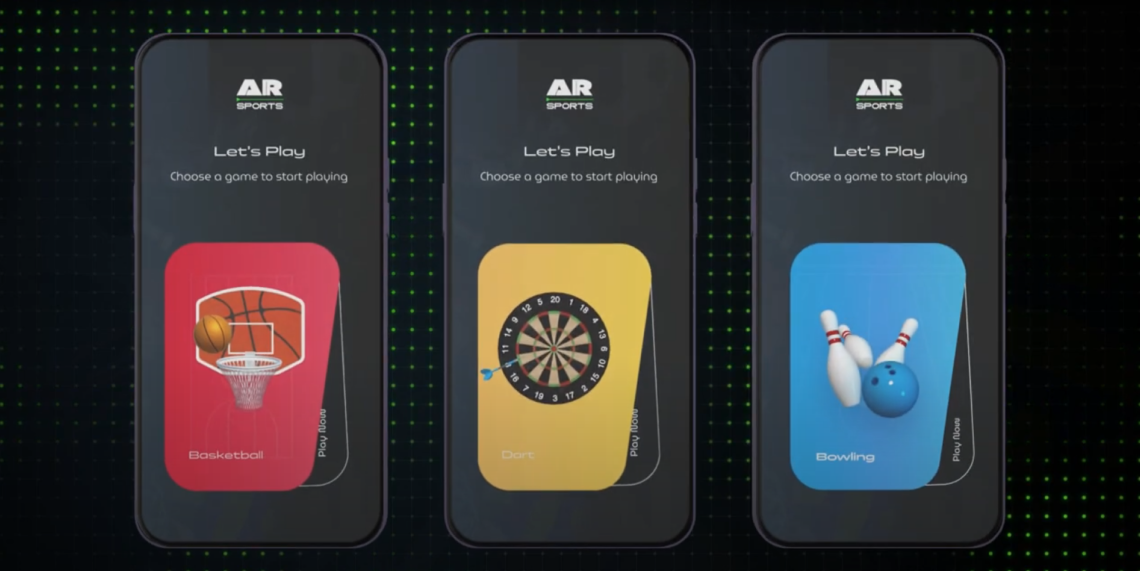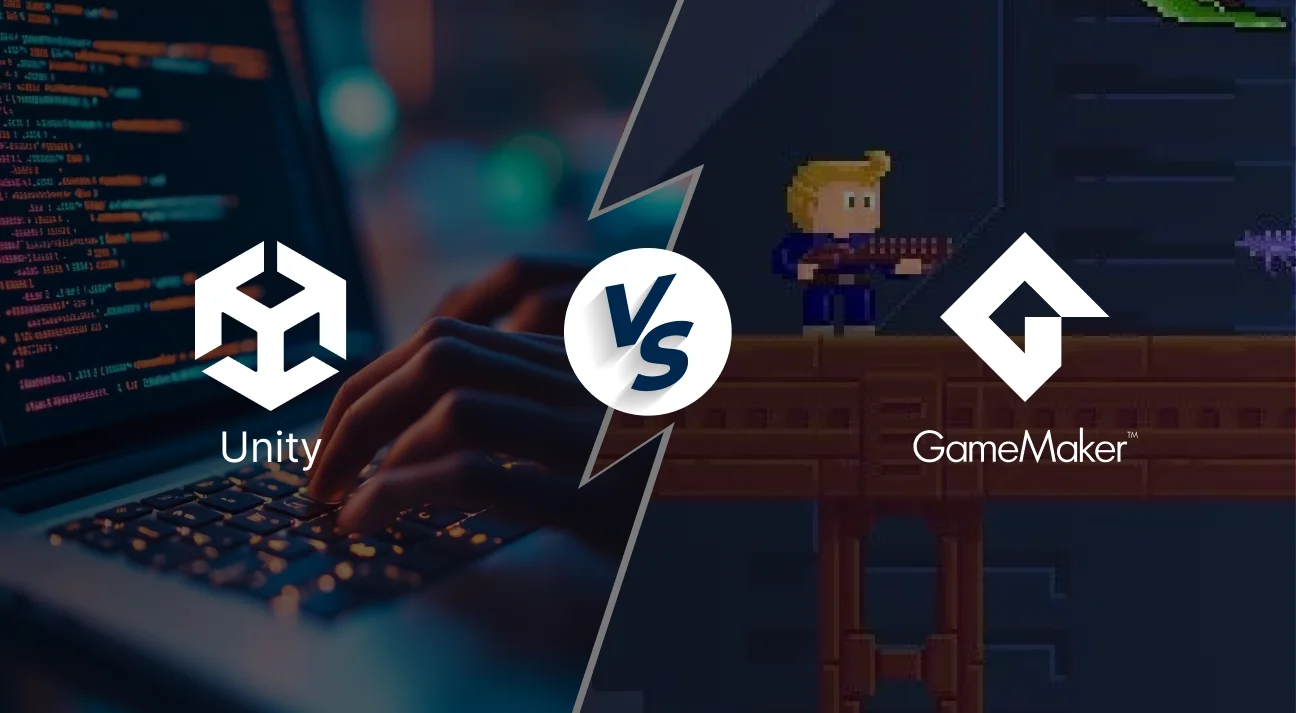
How AR & VR in Gaming is Transforming Gameplay Experience?
Imagine a game taking you to the world of fantasies and offering a real-time experience like you are present in the scenario. How entertaining would it be to play these games and explore a different yet captivating world? In today’s time, it’s no longer an imagination but a reality – Augmented and Virtual Reality.
AR/VR in gaming has revolutionized the playing experience with its interactive elements and technical advancements. AR combines 3D graphics with real-time environments and provides a multidimensional space for game lovers. On the other hand, VR includes physical activities and gaming devices that make the game seem more realistic.
Due to these advancements, AR games acquired a market share of $8.4 billion in 2022 and may reach $43.1 billion by 2028. VR in gaming obtained a market size of $12.13 billion in 2022 and expects to cross the $2.4 billion revenue mark by 2024.
However, the information is just the tip of the iceberg, and there is a lot to cover on AR/VR in gaming. These emerging technologies are transforming the gaming industry at a rapid pace, attracting players across the globe and providing an immersive experience.
In this blog, we will throw light on the rapid transformation and AR/VR impact on games. So, let’s get started.
- What is Augmented Reality?
- What is AR in Gaming Industry?
- Types of AR Games
- Most Popular AR Games
- What is Virtual Reality?
- What is VR in Gaming Industry?
- Types of VR Games
- Most Popular VR Games
- Benefits of Implementing AR & VR Technologies in Games
- The Future of AR/VR in the Gaming Industry
- Why Employ 300Mind for AR & VR Game Development?
- FAQs on AR/VR Game Development
What is Augmented Reality?
Augmented Reality is a technology that enables the display of digital images and information in the physical environment. It works with computer screens or camera feeds and appears like an enhanced version of the real world created using sound effects, sensory stimuli, digital visual elements, etc.
With AR, programmers overlaid information to make a digital world, depicting a natural environment and improving user experience. Companies, businesses, and retailers use AR to promote their services and products, collect user data and launch marketing campaigns.
Since its invention, there have been a lot of perceptions and myths around AR technologies. Many see it as a marketing tool, but it is far from being the one. AR doesn’t play one role but has diverse usage and helps to derive tangible benefits from technology and virtual realms. It works with elements and helps create a realistic virtual world that aids users in decision-making related to buying or other.
What is AR in Gaming Industry?
AR is used for attaining different goals in games. For example, you might have played games where you have to protect your house from superficial creatures or look for hidden things in remote areas. These are prime examples of AR-powered games, and many others follow the trail.
They all leverage AR technologies to record the user’s surroundings and track their orientation and motions to create a digital avatar or find superficial creatures in the game.
Moreover, sensors track user movements whenever users interact with virtual creatures and make adjustments accordingly. AR games also send visual and audio feedback, creating an ideal gameplay environment for players.
Types of AR Games
AR games have seen notable growth and diversity recently. They have garnered popularity and user attention due to these advancements. Now, various types of AR games leverage the capabilities of mobile devices and dedicated AR hardware.
Here are some common AR game types:
1. Location-based AR Games
These games use GPS and real-world location data to overlay virtual elements onto the player’s environment. Players look for in-game items in their surroundings, puzzles, virtual characters, quests, unlock stages, complete challenges and engage in battles while moving around the real world.
2. AR Sports Games
AR adds details and virtual elements to traditional sports games like Tennis, Basketball, Soccer, Cricket, etc. They support multiplayer mode, and players can enjoy these games with friends.
3. AR Puzzle Games
In these games, programmers integrate puzzles and challenges into the player’s environment using AR elements. Players have to solve riddles, look for hidden objects or navigate through a virtual maze overlaid in real-time location.
4. AR Stimulation Games
These games use AR to provide realistic simulations of different activities and scenarios. You can relate these games to home decoration games, virtual aquariums, AR pet simulations, etc.
5. AR Social Games
Social games promote interactions between players with the help of augmented reality. They encourage players to engage in virtual activities, collaborate on tasks and visit each other’s virtual spaces to complete the challenges.
6. AR Educational Games
Developers use AR elements to create interactive and immersive educational experiences. Educational AR games teach history, science, or other subjects through interactive AR content.

Most Popular AR Games
Here are the top AR games that have garnered the attention and appreciation of game lovers:
1. ARSports

300Mind designed ARSports while keeping Augmented Reality at the forefront. The game has two options: basketball and dartboard. In the game, AR is mainly used to recognize objects and enable users to play with them.
2. PokemonGo

Who doesn’t know about PokemonGo? The game went viral and attracted a huge mass within a few months of its launch. Players loved finding Pokemon in the hidden locations around their properties. AR made it possible and engaged players for uncountable hours.
3. Ingress Prime

The AR game is conceptualized, developed, and published by the game development company, ‘Niantic’. Ingress Prime takes the support of GPS and AR to detect and interact with portals in the proximity of players. Game players hack portals and continue with the rest of the game. AR has played a huge role in the game’s popularity and helped it cross the 20 million downloads mark.
4. Zombies, Run

It’s an immersive audio adventure AR game that promotes fitness. While playing, you go for a walk or run around the premise to unlock the pieces of the story. AR and GPS support users in unlocking these pieces and involve them in an engaging drama.
Apart from these four, AR games like Orna, NBA All World, Jurassic World Alive, Egg, Inc, etc., are some notable AR games that have garnered the popularity and appreciation of game lovers.
What is Virtual Reality?
The exact definition of VR lies in its name, ‘Virtual and Reality.’ In other words, it allows us to feel the virtual world like reality. It involves devices that present the picture of reality in a virtual world that isn’t there.
In technical terms, virtual reality is a three-dimensional computer-generated environment. Users can explore this environment and imagination, perform actions, make changes, interact with characters, and manipulate objects.
Programmers implement virtual reality using various technologies, and viewers can experience it with the help of special gloves, omnidirectional treadmills, and headsets. These devices stimulate the senses to create a realistic experience for users.
Virtual reality targets the human senses and tries to provide an immersive and practical experience to the users involved in any activity. However, it demands extensive expertise from the programmers because the human brain is synchronized and can identify slight differences.
Programmers must know how to define connections between sensory synchronicity, software, and hardware to obtain a sense of presence that makes you feel like you are in the environment. Immersive films, 3D arts, and video games are prime examples of VR.
What is VR in Gaming Industry?
You might have played 3D games in a mall or on PlayStation wearing a headset on your eyes or holding objects in hand to interact with characters. You might have visited 4D rooms in malls and sat on the seats with a headset over your eyes to experience a virtual landscape. That’s VR in games for you.
Developers create these games and their concepts arts for gaming consoles, mobile phones, VR rooms, desktops, etc., using VR software to supersede the real-time environment.
Players playing VR games move around the room or use gadgets to communicate with the characters in the game. On top of it, VR rooms use sensory components, wearable technology, haptic devices, scents, etc., to mimic reality.
Types of VR Games
VR games are categorized into various types based on gameplay, mechanics, and objectives. Even the use cases have increased over time. Here are some common types of VR games:
1. First-Person Shooter (FPS) VR Games
These games put the players in the role of a protagonist, usually armed with weapons, and allow them to engage in a battle against enemies. Players aim, shoot and move within the game environment to sustain the game.
2. Action-Adventure VR Games
Action-adventure games put the players through a thrilling storyline that players follow while combating challenges and puzzles. Virtual reality elements make these games more interesting and immersive for players.
3. Stimulation VR Games
This type of VR game focuses on recreating real-life experiences or scenarios in a virtual environment. Its example includes driving simulators, flight simulators, job-specific simulations, etc.
4. Puzzle VR Games
These VR games entertain players with various puzzles and brainteasers and encourage them to brainstorm and solve these puzzles to progress through the game.
5. Sports VR Games
Programmers design sports games with VR elements to engage players in virtual sports like boxing, golf, tennis, etc., providing a realistic and interactive sports experience.
6. Social VR Games
These games explore the virtual world and encourage interaction among players. Games provide challenges related to communication and help players bond personally.
7. Narrative & Story-Driven VR Games
Storytelling VR games present mythical creatures or base the game around a tale, providing emotional experiences while ensuring immersive narratives.
8. Educational VR Games
In these VR games, players can learn various skills, share knowledge, interact, compete, and train each other in shared virtual spaces using educational tools and VR elements.

Most Popular VR Games
Below mentioned are some of the best VR games that have acquired a wide user base.
1. Half-Life: Alyx

Valve has developed this full-fledged VR game with attractive graphics and advanced features. Players play the role of Alyx Vance and invade enemies, Combine forces in City 17, protecting Earth from their attack. The game involves the use of headsets, gravity guns, controllers, and other objects to make the experience more realistic.
2. Minecraft VR

It’s a single and multi-user VR game bereft of any story, character, or drama. Players are free to explore their imagination and create their world with digital assets. They mine the landscape to build a city, house, or whatever they want and achieve rewards.
The game attracts users with 3D audio and graphics, multiplayer mode, VR Turning, and VR Controllers and keeps the players hooked on the game for hours.
3. Rec Room

The VR game was launched in 2016 and captured the hearts of players within a short span. You can play the game with your friends and family, irrespective of their location. You can create an avatar and play entertaining games like Paintball, Disc-Golf, 3D Charades, etc.
4. The Forest

It’s an adventurous VR game where up to four players can team up to fight the Cannibalistic Barbarians. The game transports you to a virtual forest full of wild animals, traps, and mythical creatures, and you must fight them to stay in the game.
The forest VR enables you to reshape or modify structures, including wooden cabins, tree houses & platforms, survival shelters, etc., that make the game more entertaining.
Along with these, Iron Man VR, No Man’s Sky VR, Skyrim VR, Resident Evil 7, The Elite: Dangerous, Defector, etc., are some of the most loved VR games.
Benefits of Implementing AR & VR Technologies in Games
Now, players don’t look at new-age virtual games with surprising eyes but stay immersed in them for hours. It has become possible due to the integration of AR/VR into the gaming industry. Apart from userbase, there is a myriad of advantages that AR/VR brings to the table. Here are a few of them.
1. Life-Like Appearance
AR and VR games enable players to engage in games physically while opening up new dimensions in limited areas. Players can feel the wind, see and smell the surroundings, and object movements.
The use of AR/VR in gaming boosts engagement and keeps the players hooked for a long time. They can draw strategies and implement them to win the game. The immersive nature of AR and VR games is the main attraction and powerful enough to give a life-like experience.
2. Real-Time Interaction
AR/VR games aren’t limited to virtual characters and also promote human interaction. Implementation of AR/VR in gaming encourages better communication among players. Players can invite their friends, collaborate with others, or go live to play and compete with others. Users can connect personally, share their gaming experience and build a strong bond.
3. Enhanced Gaming Experience
Think of a multidimensional place or game room which is a mix of real and virtual worlds. Players can move around, touch and feel the objects, direct characters, shoot beams or bullets at enemies, and do a lot more. Won’t it be extremely entertaining to play such games?
That’s another benefit of bringing AR and VR into the gaming industry. Both technologies can help design real-time games and enhance players’ experience to manifolds.
4. Spike in Revenues
Players engage in AR/VR games for a longer period and share their experiences with friends and acquaintances, bringing more players to play the game. Mouth publicity and extended engagement increase revenues and can bring in billions of dollars.
5. Educational Benefits
AR/VR games stimulate the senses and increase imagination power in players. It supports learning and helps them understand concepts easily and develop new skills. Many companies are developing educational games using AR/VR technologies.
Now that we have discussed the benefits of using AR/VR in the gaming industry, we will move to its impacts and talk about the revolution it will bring to our world.
Also, for a better understanding of the topic, read our blog on metaverse gaming.
The Future of AR/VR in the Gaming Industry
Earlier, AR/VR games were basic with overlaid on the faces of characters or showed 3D images to make the game appear realistic. At present, AR/VR games have crossed these limitations and incorporated the real world into the system.
Designers are working continuously to integrate AR and VR into the gaming industry and create a flawless virtual world through technology and visuals. Soon, games will be able to orient directions, understand and work according to the player’s psychology, and adjust and move in a real-time environment.
Now, you can visualize the future of AR/VR in gaming and estimate how these technologies will shape the industry. Here are some notable facts supporting the estimation.
- AR/VR will be in mainstream gaming within five years. From 20 to 25 ahead, most of the games will be created using AR/VR technologies. Players will emerge in the virtual world and interact with characters using headsets, gloves, and controllers with motion sensors.
- According to market experts, the market share of AR/VR in the gaming industry is expected to hit the mark of $11.0 billion by 2026, following a CAGR of 18.5% from 2021 to 2026. Now, you can understand the potential of AR/VR games and estimate the profits they can bring to the table.
- Researchers and programmers are working to integrate artificial intelligence in AR & VR games to make the games more advanced. AI will use the players’ environment instead of displaying it on the screen and provide a personalized experience to each user. AR & VR games having AI in them are worth the investment.
- Summarizing it all, the market size of VR in the gaming industry is forecasted to reach $53.44 billion by 2028 and grow at a CAGR rate of 31.4% between 2021 to 2028. On the other hand, AR in gaming is expected to reach $43.1 billion by 2028, forecasting a CAGR of 30.2% between 2023 to 2028.
So, now is the time to invest in AR & VR games and earn profits into manifolds. 300Mind can help you with AR/VR game development and make the investment worthwhile. Now, you must be thinking how? Well, let us tell you about it.
Also Read: Key Factors to Consider When Outsourcing Your Game Art Project
Why Employ 300Mind for AR & VR Game Development?
Players are flocking to AR/VR games and spending hours exploring the virtual world. The future of AR/VR in gaming seems bright and promising with the current landscape moving ahead with the realistic and immersive gaming experience and craving for more. The industry will offer a great return and multiply the investment into manifolds.
300Mind as a leading game development company is helping organizations and individuals take a chunk of this profit and earn great revenues. Our expert team design AR & VR games while leveraging advanced technologies and the latest development tools. We have a professional team of game developers, designers, technical experts, motion graphic designers, 3D artists with exceptional skills and boundless expertise.
We put our best efforts into creating realistic AR & VR games that transport players into the land of imagination, adventure, and fantasies, bringing you success and a wide user base. 300Mind is the one-stop shop if you are planning to invest in AR/VR game development.
Reach out to our team to discuss your requirements.
FAQs on AR/VR Game Development
It’s a tough question to answer. Both AR and VR have their capabilities and distinctions. You should choose one according to your requirement and game plan. Integration of any technology will benefit your business.
The price depends on project requirements, technology, length, deadline, location, number of resources, engagement model, and many other factors. You can share your requirements with 300Mind to get the budget estimation.
300Mind develops AR/VR games for virtual reality headsets, augmented reality devices, gaming consoles, mobile platforms, PC, and game rooms. We follow stringent practices to design and develop entertaining and engaging games for our clients.








